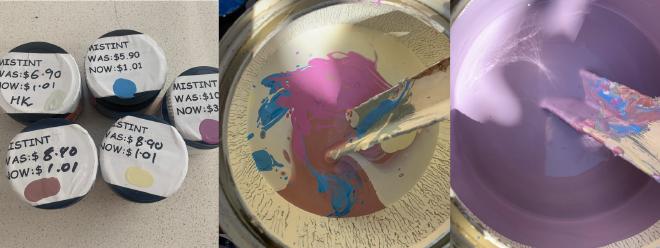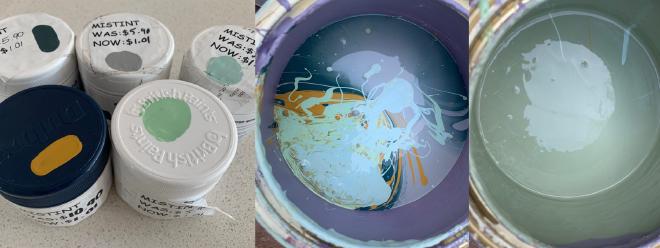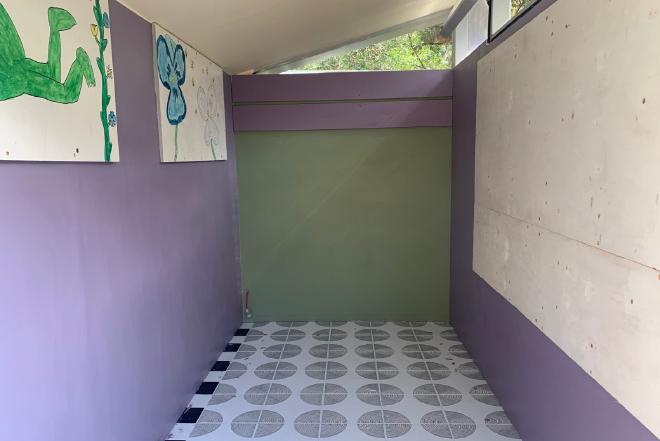Finishing

Table of Contents
Quiet Shed - This article is part of a series.
Plastering #
Mounting the plasterboard involved solving a complex optimisation problem. As well as some new sheets of plasterboard, I had about a dozen different-sized offcuts. The problem was to decide how to lay them out to best cover the walls and ceiling, including a double layer on the ceiling as described on the Soundproofing page. My wife came up with a solution.
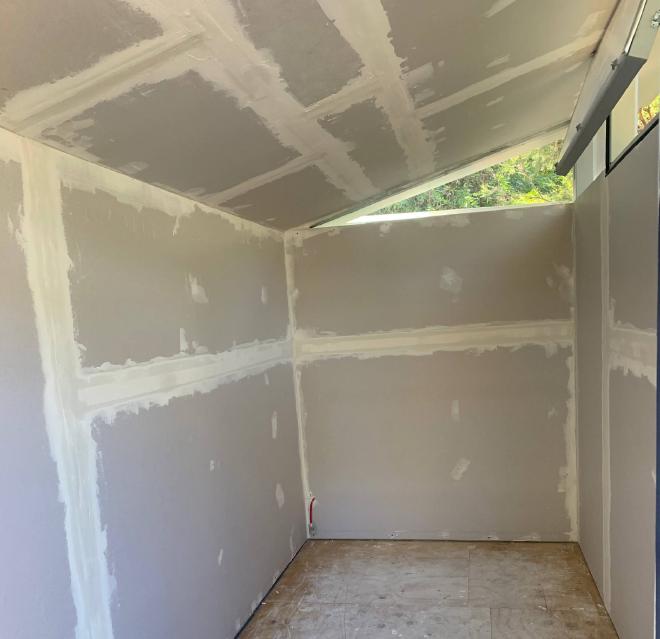
Flooring #
Common choices for workshop floors are concrete or rubber. I don’t like concrete for its carbon emissions, its permanence, and its coldness. I eventually decided on vinyl: cheap and easy to clean. Peel-and-stick vinyl tiles are admittedly tacky but super easy.
The rubber underlay is described on the Soundproofing page.
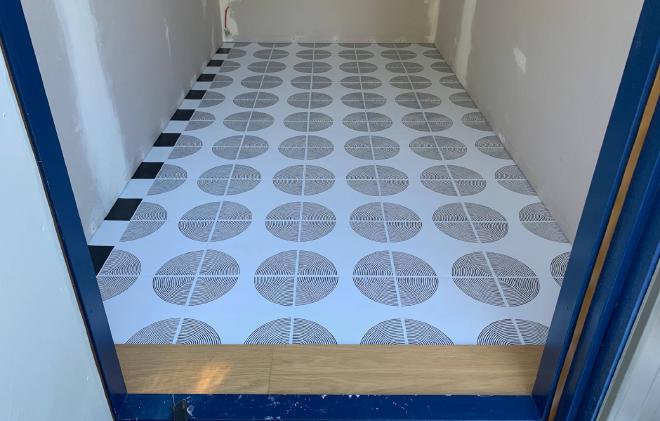
For simplicity I chose not to have any skirting boards. I just slotted the tiles in under the plasterboard (which was raised 10mm off the subfloor).
Painting #
I’m often shocked by the price of paint. So the shelf in Bunnings that I get most excited about is the discounted paint shelf. Mostly it is paint that was tinted the wrong colour, or damaged tins that can not be put in the mixing machine. In this case, I did not have a specific colour requirement, so I was free to buy $77 worth of random mistinted sample pots for $12.
